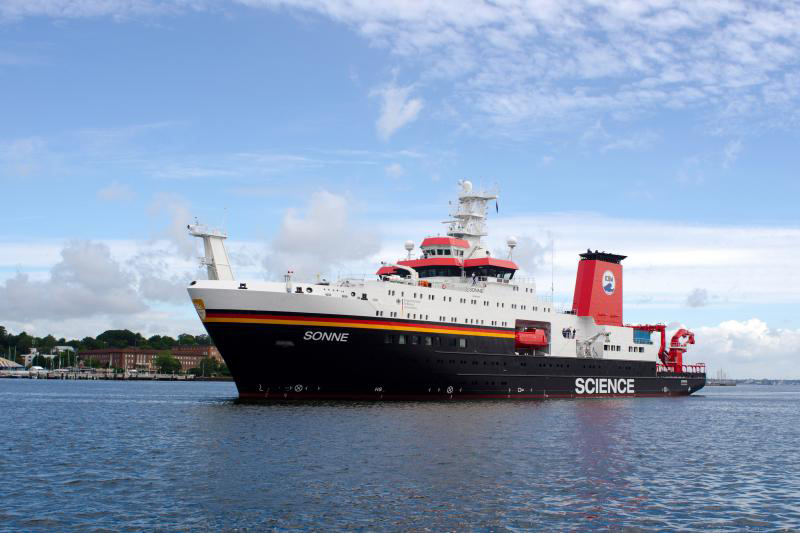SONNE SO241
- Area:
- Gulf of California
- Time:
-
20.06.2015 - 24.07.2015
- Institution:
- GEOMAR
- Chief scientist:
- Christian Berndt
Reliable climate forecasts are only possible if all the factors that affect the climate are known. At the end of the Paleocene about 56 million years ago there was an astonishingly rapid global warming that has been caused by the escape of carbon from the Earth System. The warming was 8 degrees Celsius within a few tens of thousand years. It is called the Paleocene Eocene Thermal Maximum (PETM). In times of a rapidly warming climate, it is necessary to find out whether the global warming of the past has been caused by geological processes, which could be triggered even now by human beings, e.g. the disintegration of gas hydrates, or whether they came from other influences, e.g. by increased volcanic activity. The aim of the expedition SO241 of the German research vessel SONNE is to test the second hypothesis. The Guaymas Basin in the Gulf of California is the only region in the world, were igneous rocks enter a sedimentary basin to a greater extent. The transitions that occur are mapped in three dimensions to determine their size and thickness and to analyze how the carbon reaches the seabed. With geochemical methods the scientists also examine how much carbon exits. In addition, the tests will help estimate how long the carbon already emerges there and if the Guaymas basin can be used as an analogy to the North-East Atlantic region at the time of the PETM. In addition to this main issue the scientists investigate the biology and geochemistry of these extraordinary carbon sources.
The works are part of the second phase of the Cluster of Excellence The Future Ocean.



